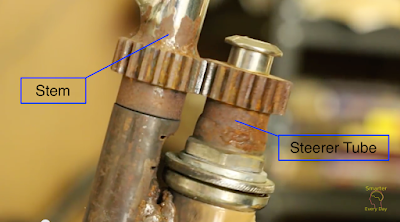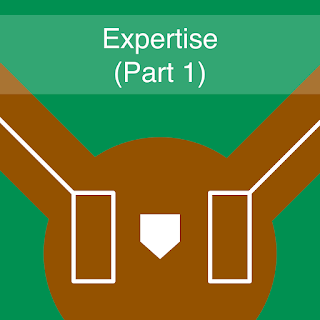Learning By Doing
You are the Creative Director of a boutique advertising firm, and you just landed a huge, new account. Your client is releasing a new carbonated beverage that features orange and vanilla. You have to come up with a new logo by the end of the week. Time is of the essence, so you crack your knuckles and get to work. Unfortunately, you hit a snag. None of your initial ideas are very creative. What do you do? How do you get "unstuck?"Getting Philosophical: Ontological Trees
Before diving into some concrete advice, let's take a step back and talk about a fundamental way we make sense of the world, through ontologies. Ontologies are useful ways of organizing the world, psychologically speaking. For example, it is useful to distinguish between "things" and "events." Because things have a physical manifestation, they have dimensional properties such as height, length, depth, and weight. They can also be further sub-categorized as alive or inert; useful to humans or not; edible or poisonous; large or small; manmade or natural. How we describe physical objects is only bound by our creativity, and what we find psychologically useful.Events differ from things because they have a different set of properties. Events take place in a specific location and have a finite duration (i.e., a starting and an end). Events usually have agents (e.g., ants, geese, or baseball players) and outcomes (e.g., building a colony, migrating south, or winning a game).
So far, the ontological tree I've described only has two branches. We have a "things" branch and an "events" branch. How do we know if these two branches of our ontological tree are psychological distinct? To determine if they are separate, we can use a simple linguistic test. It is perfectly logical to say, "My car is blue;" however, you would rightfully worry about my psychological health if I said, "That baseball game is blue." We know that events and things are distinct because they have a non-overlapping set of properties that are specific to that branch of the ontological tree [1].
There are many ways to carve up the world, and Fig. 1 is a plausible, yet incomplete attempt [2]. A proper articulation of all the possible branches would take an incredibly long time. Instead, this tiny ontological tree is meant to clarify the case study in the next section.
 |
| Figure 1. A plausible, yet (woefully) incomplete ontological tree. |
Shifting Takes Guts
Before the 1970s, most doctors assumed that the stomach was too acidic for bacteria to survive. If you went to your doctor complaining of a stomach problem, he or she would tell you that your stomach is producing too much acid, and that you need to figure out a way to reduce the acid production. Obviously, you would need to avoid eating certain foods, such as orange juice or overly spicy food. Your doctor would also tell you to avoid stressful situations because it was believed that stress increases the production of stomach acid.In the late 1970s and early 1980s, this dogma was challenged by two physician researchers. Barry Marshall and J. Robin Warren were interested in the etiology of peptic ulcers. They noticed that patients with ulcers had an unusually high number of bacteria (Helicobacter pylori) in their stomach. This, of course, went against wisdom of the day. For them, the correlation was too strong to ignore.
Because the explanation at the time was so ingrained, Marshall and Warren had a difficult time convincing the medical field of the causal connection between H. pylori and peptic ulcers. In very dramatic (and highly publicized) fashion, Marshall infected himself with the bacteria, developed an ulcer, and then cured himself by taking an antibiotic. After this dramatic demonstration, the medical community was finally convinced [3].
Going back to our ontological tree, one could argue that, before the 1980s, the medical community believed that the cause of peptic ulcers was: Mental state…Emotion…Stress. However, to make their scientific discovery, Marshall and Warren had to shift across the ontological branches to: Things…Objects…Natural Kind…Animals…Bacteria. That's a highly creative shift, and one that certainly needs to be celebrated. In October of 2005, Barry Marshall and Robin Warren were awarded the Nobel Prize in Physiology or Medicine for their discovery [4].
The S.T.E.M. Connection
What can peptic ulcers teach us about generating a creative logo for your client? My recommendation is to first identify an ontology that makes sense to you. Keep in mind that there may be domain-specific ontologies (e.g., a medical ontology). Then, try to situate your current position on that tree. Finally, look across the branches and ask yourself if there is a different way to frame the problem? Can you shift across the branches and search for a new solution there?Here's an example that advice. Von Glitschka is the Creative Director/Illustrator of Glitschka Studios. Mr. Glitschka has produced several LinkedIn courses that teach how to design creative logos, and one method that he uses is called the "word association chart." At the center, you have your focal concept (e.g., orange vanilla soda). Then you apply different categories of words to your focus. For example, can you think of any puns or metaphors that are associated with vanilla beans and oranges? The word-association strategy is particularly insightful because analogies and metaphors are especially suited for helping people shift across ontological boundaries. For example, the metaphorical statement, Mary is going to blow her lid, is a mental state (i.e., anger) represented as a thing (i.e., steam) [5].
So, if you ever find yourself stuck, and you are looking for a creative solution, remember: Be shifty!
Share and Enjoy!
Dr. Bob
Going Beyond the Information Given
[1] This description of an ontology might remind you of the representation we used of the concept whale in a previous post.[2] Chi, M. T. H., & Hausmann, R.G.M. (2003). Do radical discoveries require ontological shifts? In L. V. Shavinina & R. J. Sternberg (Eds.), International Handbook on Innovation (pp. 430-444).
[3] Thagard, P. (1998). Explaining disease: Correlations, causes, and mechanisms. Minds and Machines, 8(1), 61-78.
[4] From the Nobel Website: The Nobel Assembly at Karolinska Institutet has today decided to award The Nobel Prize in Physiology or Medicine for 2005 jointly to Barry J. Marshall and J. Robin Warren for their discovery of “the bacterium Helicobacter pylori and its role in gastritis and peptic ulcer disease."
[5] For other fun examples of metaphorical language check out: Lakoff, G. (2008). Women, fire, and dangerous things. University of Chicago press.








